Biological Reaction Engineering: Dynamic Modeling Fundamentals with 80 Interactive Simulation Examples 3rd Edition Elmar Heinzle
Visit to download the full and correct content document: https://ebookmass.com/product/biological-reaction-engineering-dynamic-modeling-fun damentals-with-80-interactive-simulation-examples-3rd-edition-elmar-heinzle/
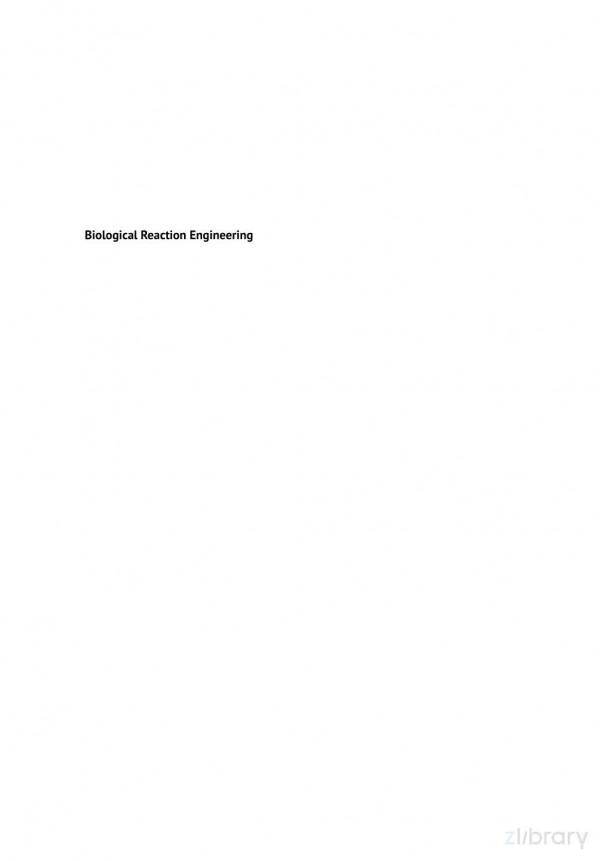
More products digital (pdf, epub, mobi) instant download maybe you interests ...
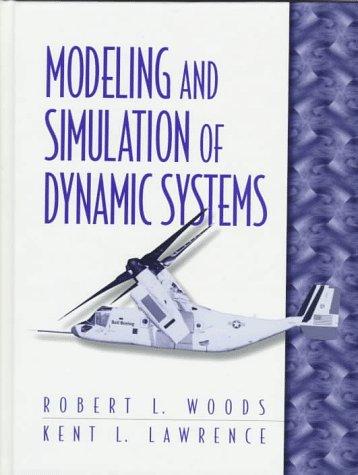
Modeling and Simulation of Dynamic Systems 1st Edition
Robert L. Woods
https://ebookmass.com/product/modeling-and-simulation-of-dynamicsystems-1st-edition-robert-l-woods/
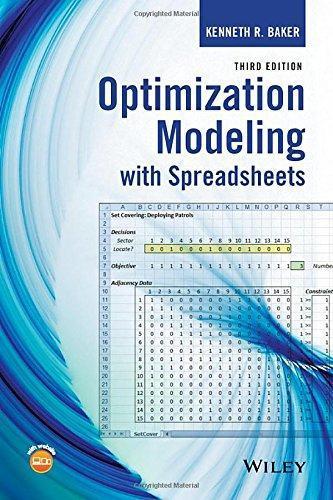
Optimization Modeling with Spreadsheets 3rd Edition
https://ebookmass.com/product/optimization-modeling-withspreadsheets-3rd-edition/
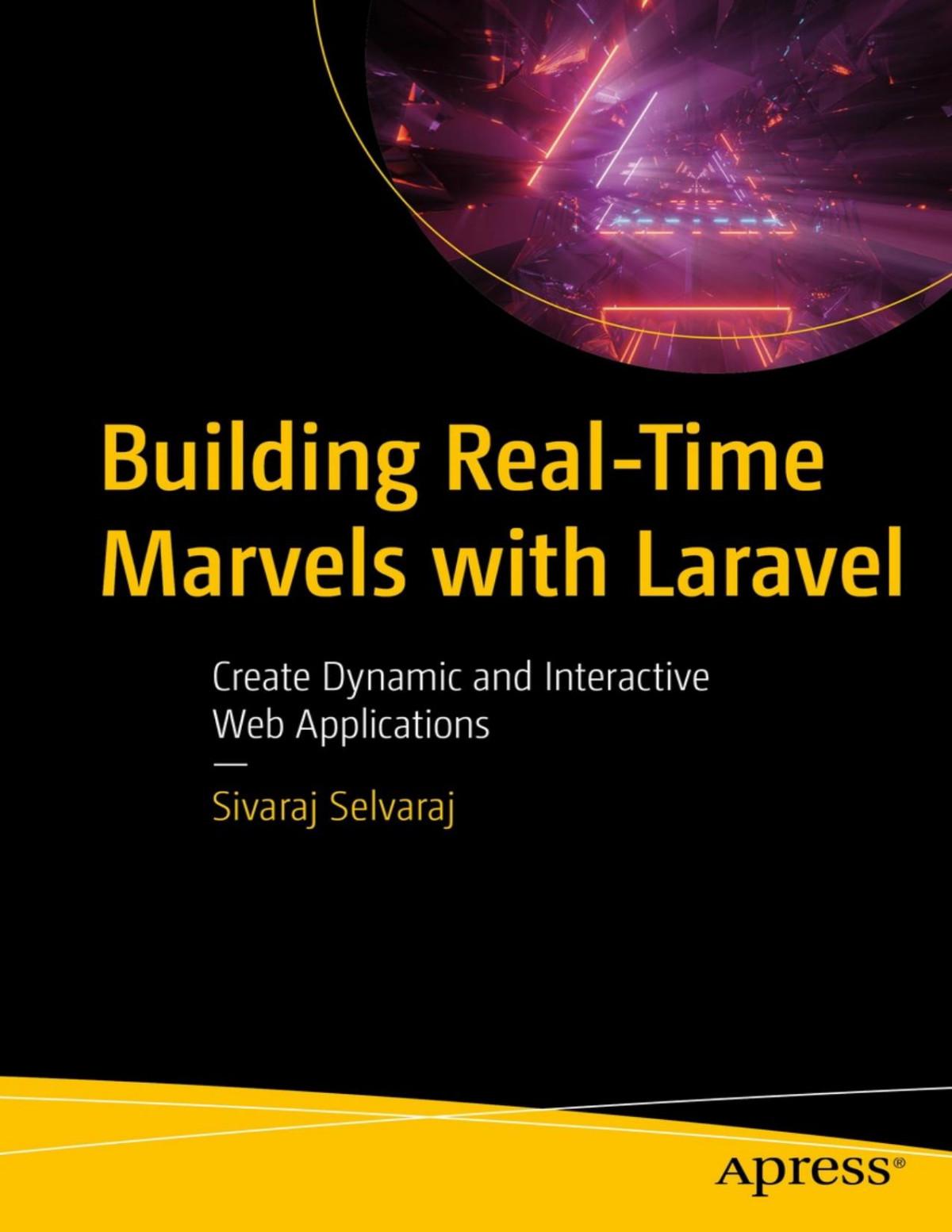
Building Real-Time Marvels with Laravel: Create Dynamic and Interactive Web Applications Sivaraj Selvaraj
https://ebookmass.com/product/building-real-time-marvels-withlaravel-create-dynamic-and-interactive-web-applications-sivarajselvaraj/
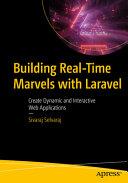
Building Real-Time Marvels with Laravel: Create Dynamic and Interactive Web Applications 1st Edition Sivaraj Selvaraj
https://ebookmass.com/product/building-real-time-marvels-withlaravel-create-dynamic-and-interactive-web-applications-1stedition-sivaraj-selvaraj/
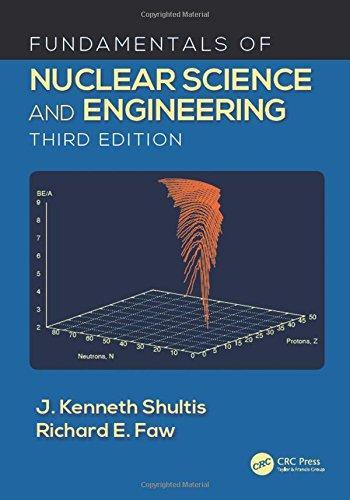
Fundamentals of Nuclear Science and Engineering 3rd Edition
https://ebookmass.com/product/fundamentals-of-nuclear-scienceand-engineering-3rd-edition/
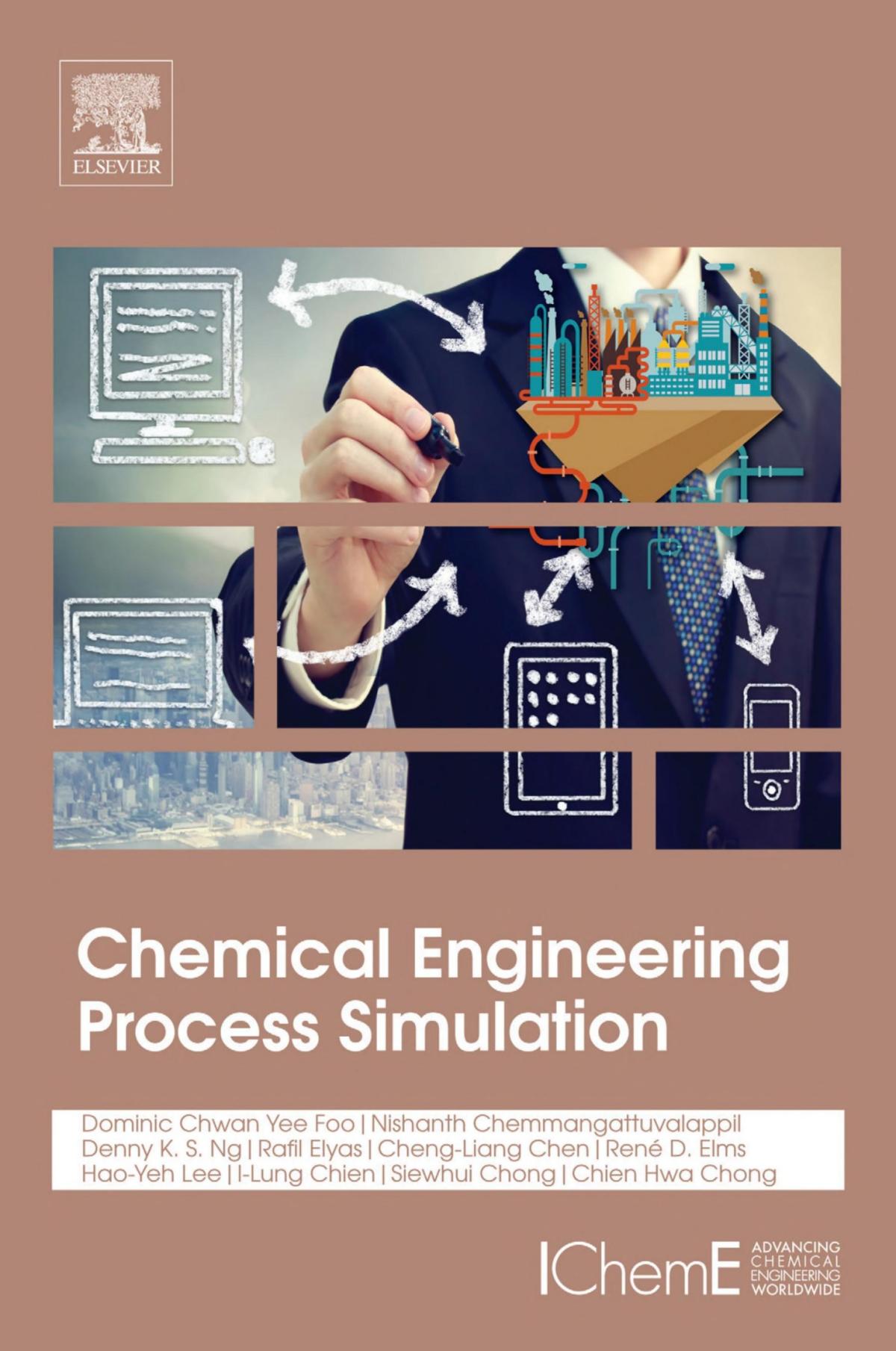
Chemical Engineering Process Simulation 1st Edition
Nishanth G. Chemmangattuvalappil
https://ebookmass.com/product/chemical-engineering-processsimulation-1st-edition-nishanth-g-chemmangattuvalappil/
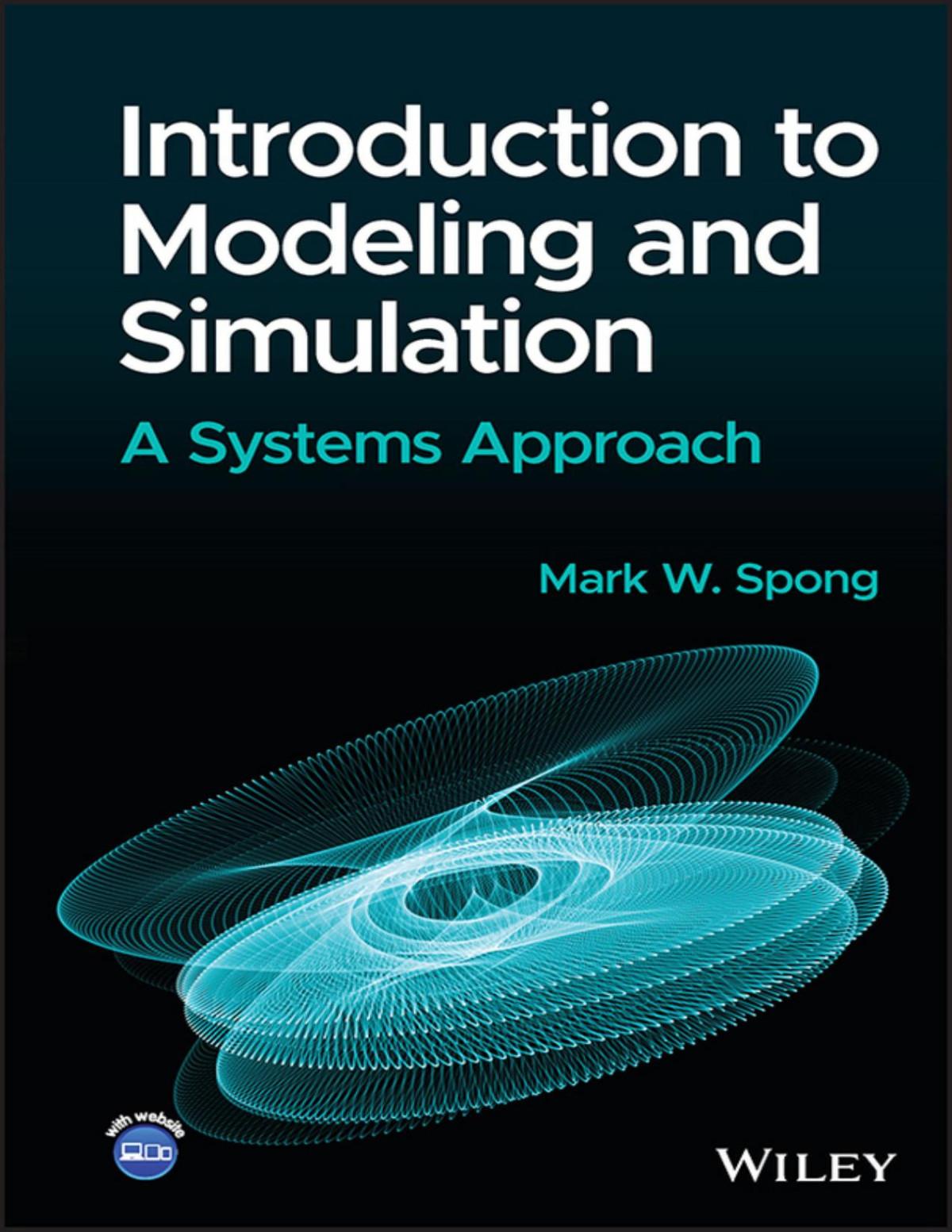
Introduction to Modeling and Simulation Mark W. Spong
https://ebookmass.com/product/introduction-to-modeling-andsimulation-mark-w-spong/
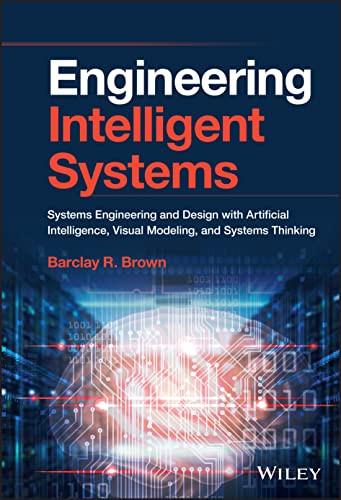
Engineering Intelligent Systems: Systems Engineering and Design with Artificial Intelligence, Visual Modeling Barclay R. Brown
https://ebookmass.com/product/engineering-intelligent-systemssystems-engineering-and-design-with-artificial-intelligencevisual-modeling-barclay-r-brown/
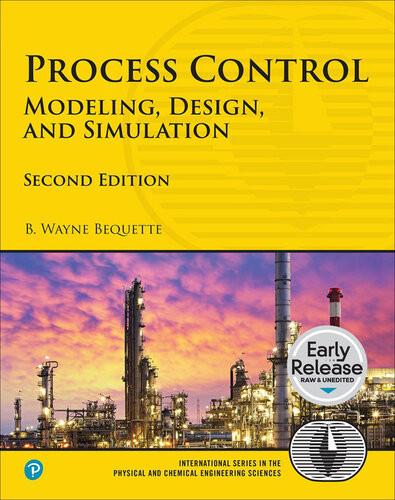
Process Control: Modeling, Design, and Simulation 2nd Edition B. Wayne Bequette
https://ebookmass.com/product/process-control-modeling-designand-simulation-2nd-edition-b-wayne-bequette/
BiologicalReactionEngineering
DynamicModelingFundamentalsWith80Interactive SimulationExamples
ElmarHeinzle
IrvingJ.Dunn
JohnIngham JiˇríE.Pˇrenosil
Third,CompletelyRevisedandEnlargedEdition
Authors
ElmarHeinzle BiochemicalEngineering SaarlandUniversity CampusA1.5 66123Saarbrücken Germany
IrvingJ.Dunn DepartmentofChemistryand AppliedBiosciences(retired) SwissFederalInstituteofTechnology Zurich(ETH) 8092Zürich Switzerland
JohnIngham DepartmentofChemicalEngineering(retired) UniversityofBradford BradfordBD71DP UnitedKingdom
JiˇríE.Pˇrenosil DepartmentofChemistryandApplied Biosciences(retired)
SwissFederalInstituteofTechnology Zurich(ETH) 8092Zuerich Switzerland
Cover Thecoverimageswerekindlyprovided bytheauthors
Allbookspublishedby WILEY-VCH arecarefully produced.Nevertheless,authors,editors,and publisherdonotwarranttheinformationcontained inthesebooks,includingthisbook,tobefreeof errors.Readersareadvisedtokeepinmindthat statements,data,illustrations,proceduraldetailsor otheritemsmayinadvertentlybeinaccurate.
LibraryofCongressCardNo.: appliedfor
BritishLibraryCataloguing-in-PublicationData: Acataloguerecordforthisbookisavailablefrom theBritishLibrary.
BibliographicinformationpublishedbytheDeutsche Nationalbibliothek
TheDeutscheNationalbibliothekliststhis publicationintheDeutscheNationalbibliografie; detailedbibliographicdataareavailableonthe Internetat<http://dnb.d-nb.de>.
©2021WILEY-VCHGmbH,Boschstr.12,69469 Weinheim,Germany
Allrightsreserved(includingthoseoftranslation intootherlanguages).Nopartofthisbookmaybe reproducedinanyform–byphotoprinting, microfilm,oranyothermeans–nortransmittedor translatedintoamachinelanguagewithoutwritten permissionfromthepublishers.Registerednames, trademarks,etc.usedinthisbook,evenwhennot specificallymarkedassuch,arenottobeconsidered unprotectedbylaw.
PrintISBN: 978-3-527-32524-5
ePDFISBN: 978-3-527-82443-4
ePubISBN: 978-3-527-82442-7
oBookISBN: 978-3-527-68533-2
CoverDesign Formgeber,Mannheim,Germany
Typesetting SPiGlobal,Chennai,India
Printedonacid-freepaper
10987654321
Contents
Preface xiii
Acknowledgments xxi
NomenclatureforPartI xxiii
ListofSimulationExamples xxviii
PartIPrinciplesofBioreactorModeling 1
1ModelingPrinciples 3
1.1FundamentalsofModeling 3
1.1.1UseofModelsforUnderstanding,Design,andOptimizationof Bioreactors 3
1.1.2GeneralAspectsoftheModelingApproach 4
1.1.3GeneralModelingProcedure 6
1.1.4SimulationTools 8
1.1.5TeachingApplications 8
1.2DevelopmentandMeaningofDynamicDifferentialBalances 9
1.2.1DerivationofaBalanceEquationUsingRates 11
1.2.2ComputerSolution 12
1.3FormulationofMassBalanceEquations 13
1.3.1TypesofMassBalanceEquations 13
1.3.2BalancingProcedure 15
1.3.2.1CaseA:ContinuousStirredTankBioreactor 15
1.3.2.2CaseB:TubularReactor 16
1.3.2.3CaseC:RiverwithEddyCurrent 16
1.3.3TotalMassBalances 23
1.3.4ComponentBalancesforReactingSystems 24
1.3.4.1CaseA:ConstantVolumeContinuousStirredTankReactor 25
1.3.4.2CaseB:SemicontinuousReactorwithVolumeChange 26
1.3.4.3CaseC:Steady-stateOxygenBalancinginFermentation 27
1.3.4.4CaseD:InertGasBalancetoCalculateFlowRates 28
1.4AdditionalRelationships 29
1.4.1StoichiometryandMetaboliteandElementalBalancing 29
1.4.1.1SimpleStoichiometry 29
1.4.1.2MetabolicNetworkStoichiometry:MetaboliteBalancing 30
1.4.1.3ElementalBalancing 31
1.4.2YieldCoefficients 33
1.4.2.1MassYieldCoefficients 33
1.4.2.2Selectivity 34
1.4.2.3EnergyYieldCoefficients 34
1.5ThermodynamicsandEquilibriumRelationships 35
1.5.1ReactionEnthalpy 35
1.5.2ChemicalEquilibrium 35
1.5.3ReceptorBinding 35
1.5.4CaseA:CalculationofpHwithanIonChargeBalance 36
1.6EnergyBalancingforBioreactors 38
1.6.1AccumulationTerm 39
1.6.2FlowTerm 39
1.6.3WaterEvaporationTerm 40
1.6.4HeatTransferTerm 41
1.6.5ReactionHeatTerm 41
1.6.6CaseB:DeterminingHeatProductionRateofaBatchFermentation 42
1.6.7CaseC:DeterminingHeatTransferAreaorCoolingWater Temperature 42
1.7TimeConstants 43
1.7.1DerivationfromDifferentialEquations 44
1.7.2DerivationfromCapacityandRate 45
2BasicBioreactorConcepts 47
2.1InformationforBioreactorModeling 47
2.2BioreactorOperation 48
2.2.1BatchOperation 48
2.2.2SemicontinuousorFed-batchOperation 50
2.2.3ContinuousOperation 51
2.2.4SummaryandComparisonofBioreactors 54
3BiologicalKinetics 57
3.1EnzymeKinetics 58
3.1.1ReactionEquilibrium 58
3.1.2Michaelis–MentenEquation 58
3.1.3OtherEnzymeKineticModels 61
3.1.3.1DoubleMichaelis–MentenKinetics 62
3.1.3.2Inhibition 62
3.1.3.3SubstrateInhibition 63
3.1.3.4AllostericKinetics 64
3.1.3.5TemperatureandpHInfluence 64
3.1.4EnzymeDeactivation 65
3.2SimpleMicrobialKinetics 65
3.2.1BasicGrowthKinetics 65
3.2.2CellDeathandSterilization 67
3.2.3SpecificRates 67
3.2.4MonodGrowthKinetics 68
3.2.5SubstrateInhibitionofGrowth 69
3.2.6ProductInhibition 70
3.2.7OtherExpressionsforSpecificGrowthRate 70
3.2.8SubstrateUptakeKinetics 71
3.2.9SubstrateUptakeinWastewaterSystems 72
3.2.10ProductFormation 72
3.3Interacting(Micro-)organisms 72
3.3.1CaseA:ModelingofMutualismKinetics 75
3.3.2CaseB:KineticsofAnaerobicDegradation 76
3.4StructuredKineticModels 77
3.4.1TypesofStructuredKineticModels 77
3.4.2ExamplesofSimpleStructuredModels 78
3.4.2.1CaseC:ModelingGrowthandSynthesisofPoly-β-hydroxybutyricAcid (PHB) 79
3.4.2.2CaseD:ModelingofSustainedOscillationsinContinuousBaker’sYeast Culture 80
3.4.2.3CaseE:GrowthandProductFormationofanOxygen-Sensitive Bacillus subtilis Culture 81
3.4.3ModelingofMetabolicNetworks 84
3.4.3.1CaseF:DynamicKineticModelforDescribingMetabolicFluxes SecondaryMetaboliteSynthesisPathway 85
3.4.3.2CaseG:ModelingtheDynamicsofMammalianCellCultivationin Fed-batchCultures 88
4BasicBioreactorModeling 91
4.1GeneralBalancesforTank-typeBiologicalReactors 91
4.1.1TheBatchFermenter 92
4.1.2TheChemostat 93
4.1.3TheFed-batchFermenter 96
4.1.4BiomassProductivity 97
4.1.5CaseA:ContinuousFermentationwithBiomassRecycle 98
4.1.6CaseB:EnzymaticTanks-in-seriesBioreactorSystem 100
4.2ModelingTubularPlugFlowBioreactors 102
4.2.1Steady-stateBalancing 102
4.2.2Unsteady-stateBalancingforTubularBioreactors 103
5MassTransfer 105
5.1MassTransferinBiologicalReactors 105
5.1.1GasAbsorptionwithBioreactioninLiquidPhase 105
5.1.2Liquid–LiquidExtractionwithBioreactioninOnePhase 105
5.1.3SurfaceBiocatalysis 105
5.1.4DiffusionandReactioninPorousBiocatalyst 106
5.2InterphaseGas–LiquidMassTransfer 106
5.3GeneralOxygenBalancesforGas–LiquidTransfer 109
5.3.1ApplicationofOxygenBalances 111
5.3.1.1CaseA:Steady-stateGasBalancetoDeterminetheBiologicalUptake Rate 111
5.3.1.2CaseB:Determinationof kL a UsingaChemicalorBiochemicalReaction ConsumingOxygen 111
5.3.1.3CaseC:Determinationof kL a byaDynamicMethod 112
5.3.1.4CaseD:DeterminationofOxygenUptakeRatesbyaDynamic Method 113
5.3.1.5CaseE:Steady-stateLiquidBalancingtoDetermineOxygenUptake Rate 114
5.3.1.6CaseF:Steady-stateDeoxygenatedFeedMethodfor kL a115
5.3.1.7CaseG:BiologicalOxidationinanAeratedTank 115
5.3.1.8CaseH:ModelingNitrificationinaFluidizedBedBiofilmReactor 117
5.4ModelsforOxygenTransferinLarge-scaleBioreactors 120
5.4.1CaseA:ModelforOxygenGradientsinaBubbleColumn Bioreactor 122
5.4.2CaseB:ModelforaMultipleImpellerFermenter 123
6DiffusionandBiologicalReactioninImmobilizedBiocatalyst Systems 127
6.1ExternalMassTransfer 128
6.2InternalDiffusionandReactionWithinBiocatalysts 130
6.2.1DerivationofFiniteDifferenceModelforDiffusion–ReactionFlatPlate Systems 132
6.2.2FiniteDifferenceModelforDiffusion–ReactioninaSphere 135
6.2.3DimensionlessParametersfromDiffusion–ReactionModels 136
6.2.4TheEffectivenessFactorConcept 137
6.2.5CaseA:EstimationofOxygenDiffusionEffectsinaBiofilm 138
6.2.6CaseB:ComplexDiffusion–ReactionProcesses(Biofilm Nitrification) 138
7AutomaticBioprocessControlFundamentals 143
7.1ElementsofFeedbackControl 144
7.2MeasurementofProcessVariables 144
7.2.1SensorsUsedinBiotechnology 145
7.2.2CalculatedMeasuredVariables 146
7.2.3DynamicCharacteristicsofMeasurement 146
7.3TypesofControllerAction 147
7.3.1On–OffControl 147
7.3.2Proportional(P)Controller 147
7.3.3Proportional–Integral(PI)Controller 148
7.3.4Proportional–Integral–Derivative(PID)Controller 149
7.4ControllerTuning 150
7.4.1TrialandErrorMethod 151
7.4.2Ziegler–NicholsMethod 151
7.4.3UltimateGainMethod 152
7.4.4ErrorIntegralsforCharacterizationofControllerPerformance 152
7.5AdvancedControlStrategies 153
7.5.1CascadeControl 153
7.5.2Feed-forwardControl 153
7.5.3AdaptiveControl 154
7.5.4OtherTypesofAdvancedControl 155
7.6ApplicationStrategiesofBioprocessControl 155
8BasicCellandBioreactorModels 159
8.1BasicCellBalances 160
8.2TheLinkoftheCellBalancestoaBioreactor 162
8.2.1ContinuousWell-MixedStirred-tankBioreactor(Chemostat) 162
8.2.2BatchBioreactor 164
8.2.3CaseA:CheckingforMetabolicSteadyStateinaBatchCulture 164
8.2.4CaseB:CompartmentedCellandBioreactorModeling 165
8.3OrganismModeling 168
8.3.1CaseC:BioreactorandHuman-bodyModelforToxicityPrediction 169
ReferencesPartIandRecommendedTextbooksandReferencesfor FurtherReading 173
PartIIDynamicBioprocessModelingandSimulation ExamplesUsingtheBerkeleyMadonnaSimulation Language 187
9DynamicBioprocessModelingExamples 189
9.1ModelingaRomanFountain 190
9.2ModelingaLake 191
9.3ModelingaMammalianCellRecirculationReactorwithExternal Aeration 192
9.4ModelingProteinSynthesisandSecretioninaEukaryoticCell 193
9.5ModelingaLiverSinusoid 194
10SimulationExamplesofBiologicalReactionProcessesUsing BerkeleyMadonna 197
10.1IntroductorySimulationExamples 199
10.1.1BatchFermentation(BATFERM) 199
10.1.2ChemostatFermentation(CHEMO) 204
10.1.3Fed-batchFermentation(FEDBAT) 208
10.1.4IntroductoryExercisesinBioreactorModelBuilding 212
10.2BatchReactors 229
10.2.1KineticsofEnzymeAction(MMKINET) 229
10.2.2Lineweaver–BurkPlot(LINEWEAV) 231
10.2.3OligosaccharideProductioninEnzymaticLactoseHydrolysis (OLIGO) 234
10.2.4BatchHeatSterilization(BATSTER) 237
10.2.5GrowthoftheCoronavirus(CORONADYN) 242
10.3Fed-batchReactors 247
10.3.1VariableVolumeFermentation(VARVOLandVARVOLD) 247
10.3.2PenicillinFermentationUsingElementalBalancing(PENFERM) 252
10.3.3EthanolFed-batchDiauxicFermentation(ETHFERM) 260
10.3.4RepeatedFed-batchCulture(REPFED) 264
10.3.5RepeatedMediumReplacementCulture(REPLCUL) 267
10.3.6PenicillinProductioninaFed-batchFermenter(PENOXY) 270
10.4ContinuousReactors 275
10.4.1Steady-stateChemostat(CHEMOSTA) 275
10.4.2ContinuousCulturewithInhibitorySubstrate(CONINHIB) 278
10.4.3NitrificationinActivatedSludgeProcess(ACTNITR) 283
10.4.4TubularEnzymeReactor(ENZTUBE) 287
10.4.5DualSubstrateLimitation(DUAL) 290
10.4.6Two-stageChemostatwithAdditionalStream(TWOSTAGE) 294
10.4.7Two-stageCulturewithProductInhibition(STAGED) 298
10.4.8FluidizedBedRecycleReactor(FBR) 301
10.4.9NitrificationinaFluidizedBedReactor(NITBED) 305
10.4.10ContinuousEnzymaticReactor(ENZCON) 310
10.4.11ReactorCascadewithDeactivatingEnzyme(DEACTENZ) 313
10.4.12ContinuousProductionofPHBinaTwo-tankReactorProcess (PHBTWO) 317
10.4.13DichloromethaneinaBiofilmFluidizedSandBed(DCMDEG) 321
10.5OxygenUptakeSystems 329
10.5.1AerationofaTankReactorforEnzymaticOxidation(OXENZ) 329
10.5.2GasandLiquidOxygenDynamicsinaContinuousFermenter (INHIB) 332
10.5.3BatchNitrificationwithOxygenTransfer(NITRIF) 337
10.5.4OxygenUptakeandAerationDynamics(OXDYN) 340
10.5.5KLADYN,KLAFIT,andELECTFIT:DynamicOxygenElectrodeMethod for K L a343
10.5.6BiofiltrationColumnforRemovingTwoInhibitorySubstrates (BIOFILTDYN) 349
10.5.7OpticalSensingofDissolvedOxygeninMicrotiterPlates(TITERDYN andTITERBIO) 354
10.6DiffusionSystems 361
10.6.1DoubleSubstrateBiofilmReaction(BIOFILM) 361
10.6.2Steady-stateSplitBoundarySolution(ENZSPLIT) 366
10.6.3DynamicPorousDiffusionandReaction(ENZDYN) 369
10.6.4OxygenDiffusioninAnimalCellSphere(CELLDIFFBEAD) 374
10.6.5OxygenDiffusiontoaSingleCellorCellAggregate (CELLDIFFCYL) 378
10.6.6ImmobilizedBiofilminaNitrificationColumnSystem (NITBEDFILM) 385
10.7ControlledReactors 393
10.7.1FeedbackControlofaWaterHeater(TEMPCONT) 393
10.7.2TemperatureControlofFermentation(FERMTEMP) 397
10.7.3TurbidostatResponse(TURBCON) 402
10.7.4ControlofaContinuousBioreactorwithInhibitorySubstrate (CONTCON) 405
10.7.5AdaptiveControlofDissolvedOxygenatLowLevelsinBatchCulture (ADAPTOXCONT) 410
10.8MembraneandCellRetentionReactors 419
10.8.1CellRetentionMembraneReactor(MEMINH) 419
10.8.2FermentationwithPervaporation(PERVAPSUB) 422
10.8.3Two-stageFermentorwithCellRecycleforContinuousProductionof LacticAcid(LACMEMRECYC) 430
10.8.4TubularHollowFiberEnzymeReactorModuleforLactoseHydrolysis (LACREACT) 435
10.8.5ImmobilizedAnimalCellsinaFluidizedBedReactor (ANIMALIMMOB) 441
10.9Multi-organismSystems 447
10.9.1TwoBacteriawithOppositeSubstratePreferences(COMMENSA) 447
10.9.2CompetitiveAssimilationandCommensalism(COMPASM) 452
10.9.3StabilityofRecombinantMicroorganisms(PLASMID) 456
10.9.4Predator–PreyPopulationDynamics(MIXPOP) 461
10.9.5CompetitionBetweenOrganisms(TWOONE) 465
10.9.6CompetitionBetweenTwoMicroorganismsforanInhibitorySubstrate inaBiofilm(FILMPOP) 468
10.9.7ModelforAnaerobicReactorActivityMeasurement(ANAEMEAS) 473
10.9.8DynamicsofanEpidemicUsingtheSIRModel(SIRDYNand SIRDYNDIM) 479
10.10StructuredandMetabolicNetworkModels 487
10.10.1OscillationsinContinuousYeastCulture(YEASTOSC) 487
10.10.2StructuredModelforPHBProduction(PHB) 492
10.10.3MammalianCellCycleControl(MAMMCELLCYCLE) 496
10.10.4MetabolicDynamicsinSecondaryMetaboliteFluxesinPotatoTubers (POTATO) 500
10.10.5StructuredModeloftheProductionofAcetoinandButanediol (SUBTILIS) 505
10.10.6DynamicsofCultivationofCHOfortheProductionofMonoclonal Antibodies(CHOMAB) 509
AppendixAUsingtheBerkeleyMadonnaLanguageandAccessingthe SimulationExamples:AShortGuide 519
A.1.ComputerRequirements 519
A.2.DownloadingSimulationExamplesandtheBerkeleyMadonna ProgramforthisBook 519
A.3.RunningPrograms 520
Index 521
Preface
Ourgoalinthistextbookistoteach,throughmodelingandsimulation,thequantitativedescriptionofbioreactionprocessestoscientistsandengineers.Inworking throughthemanysimulationexamples,you,thereader,willlearntoapplymaterial andenergybalancestodescribethedynamicsofavarietyofbioreactorsandother biologicalsystems.Foryourefforts,youwillberewardedwithagreaterunderstandingofthedynamicsofbiologicalprocesses.Themanyexampleapplicationswillhelp youtogainconfidenceinmodeling,andyouwillfindthatthesimulationlanguage used,BerkeleyMadonna,isapowerfultoolfordevelopingyourownsimulation models.Yournewabilitieswillbevaluablefordesigningexperiments,forextractingkineticdatafromexperiments,indesigningandoptimizingbiologicalreaction systems,andfordevelopingbioreactorcontrolstrategies.
Thisbookisbasedonoursuccessfulcourse,“BiologicalReactionEngineering,” whichhasbeenheldannuallyintheSwissmountainresortofBraunwaldformany yearsandwhichisnowknown,throughoutinternationalbiotechnologycirclesas the“BraunwaldCourse.”Thiscoursehasbeencontinuedwithamodifieddirection andisnowcalled“BiosystemsEngineering:BioreactorandCellFactories.”Altogetherthecoursehasbeenheldfor40years.Thenewercoursecontinuesusing thebookbutputtingmoreemphasisonmodelingcellularsystemsandtheirreactorenvironment.Thisthirdeditionprovidesanexcellentbasisforteachingsystems biologyprinciples.Moredetailsonthecoursecanbefoundatourwebsite:http:// www.braunwald-bioengineering.de.
Modelingisoftenunfamiliartobiologistsandchemists,whoneverthelessneed modelingtechniquesintheirwork.Thegeneralfieldofbiochemicalreaction engineeringisonethatrequiresaverycloseinterdisciplinaryinteractionbetween appliedmicrobiologists,biologists,biochemists,biochemicalengineers,engineers, bioinformaticians,andmanagers;alargedegreeofcollaborationandmutual understandingisthereforeimportant.Microbiologists,molecularbiologists,and biochemistsoftenlacktheformaltrainingneededtoanalyzelaboratorykinetic datainitsmostmeaningfulsense,andtheymaysometimesexperiencedifficulty inparticipatinginengineeringdesigndecisionsandincommunicatingwithengineers.Theseareexactlythetypesofactivityrequiredinthemultidisciplinaryfield ofbiotechnology.Chemicalengineering’sgreateststrengthisitswell-developed
modelingconcepts,basedonmaterialandenergybalances,combinedwithkinetics ofreactionsandofmassandenergytransfer.
Biochemicalengineeringisadisciplinecloselyrelatedtoconventionalchemical engineeringinthatitattemptstoapplyphysicalprinciplestothesolutionofbiologicalproblems.Thisapproachmaybeappliedtothemeasurementandinterpretation oflaboratorykineticdata,tometabolicnetworkmodeling,e.g.formetabolicflux analysisormetabolicnetworkdesign,ortothedesignoflarge-scalefermentation, enzymaticorwastetreatmentprocesses.Thenecessaryinterdisciplinarycooperationrequiresthebiologicalscientistsandchemicalengineersinvolvedtohave atleastapartialunderstandingofeachother’sfields.Thepurposeofthisbook istoprovidethemathematicaltoolsnecessaryforthequantitativeanalysisof biologicalkineticsandrelatedbiologicalprocessphenomena.Moregenerally,the mathematicalmodelingmethodspresentedhereareintendedtoleadtoagreater understandingofhowthebiologicalreactionsystemsareinfluencedbyprocess conditions.
Engineeringsciencedependsheavilyontheuseofappliedtheory,quantitative correlations,andmathematics,anditisoftendifficultforallofus(notonlythe biologicalscientist)tosurmountthemathematicalbarrier,whichisposedbyengineering.Amistake,oftenmade,istoconfuse“mathematics”withtheengineering modelingapproach.Inmodeling,anattemptismadetoanalyzearealandpossiblyverycomplexsituationintoasimplifiedandunderstandablephysicalanalog. Thisphysicalmodelmaycontainmanysubsystems,allofwhichstillmakephysicalsense,butwhichnowcanbeformulatedwithmathematicalequations.These equationscanbehandledautomaticallybythecomputer.Thus,theengineerand thebiologistarefreedfromthedifficultiesofmathematicalsolutionandcantackle complexproblemsthatwereimpossibletosolvebefore.Models,however,stillhave tobeformulatedandoneofthemostimportanttoolsofthebiochemicalengineer, inthisoperation,isthesettingupofmaterialandenergybalanceequations.The stepofextractingaphysicalmodelfromacomplexrealsituationisactuallythemost importantandmostdifficult,thoughmostlynotsufficientlytreatedintextbooks.It requiresathoroughunderstandingofphysical,chemical,andbiologicalprinciples combinedwithacertainamountofphantasyandcreativity.Itmaynotbeeasyforthe biologistorbiochemisttofullyappreciatetheimportanceofdifferentialequations, butmaterialbalanceequationsarenotsodifficulttounderstand,sincethefirstlaw ofconservation,namelythatmattercanneitherbecreatednordestroyed,isfundamentaltoallscience.Materialbalances,whencombinedwithkineticrateequations, toformsimplemathematicalmodels,canbeusedwithverygreateffectasameans ofplanning,conducting,andanalyzingexperiments.Modelsareespeciallyimportantasameansofobtainingabetterunderstandingofprocessphenomena.Arationalandstringentapproachtoexperimentationanddesignrequiresaconsiderable knowledgeofthesystem,whichcanreallyonlybeachievedusingamathematical model.Suchamodelwillalsoassistinunderstanding,therebyreducingcostlyand time-consumingexperimentalwork.Thisbookattemptstodemonstratethisbyway ofthemanydetailedexamplesthatarebasedontheextendedscientificexperienceof
Preface xv theauthors.Manyofthemorecomplexexamplesareoftentakenfromourscientific publications.
Thecontributionmadetobiotechnologybythebiochemicalengineeringmodeling approachisespeciallyimportantbecausethebasicprocedurecanbedevelopedfrom afewfundamentalprinciples.Aspecialaimofthisbookistodemonstratethatyou donothavetobeanengineertolearnmodelingandsimulation.Thebasicconcepts ofthematerialbalance,combinedwithbiologicalandenzymekinetics,areeasily appliedtodescribethebehaviorofwell-stirredtankandtubularfermenters,mixed culturedynamics,interphasegas–liquidmasstransfer,internalbiofilmdiffusional limitations,andmetabolicorsignalingnetworkdynamics,asdemonstratedinthe computerexamplessuppliedwiththisbook.Suchmodels,whensolvedinteractively bycomputersimulation,becomemuchmoreunderstandabletonon-engineers.
TheBerkeleyMadonnasimulationlanguage,usedfortheexamplesinthisbook,is especiallysuitablebecauseofitssophisticatedcomputingpower,interactivefacility, andeaseofprogramming.Theuseofthisdigitalsimulationprogramminglanguage makesitpossibleforthereader,studentandteacher,toexperimentdirectlywith themodel,intheclassroomoratthedesk.Inthisway,itispossibletoimmediately determinetheinfluenceofchangingvariousoperatingparametersonthebioreactor performance–areallearningexperience.
Thesimulationexamplesservetoenforcethelearningprocessinaveryeffective mannerandalsoprovidehands-onconfidenceintheuseofasimulationlanguage. Thereaderscanprogramtheirownexamples,byformulatingnewmaterialbalance equationsorbymodifyinganexistingexampletoanewsetofcircumstances.Thus, byworkingdirectlyatthecomputer,theno-longer-passivereadercanexperiment directlyonthebioreactionsysteminaveryinteractivewaybychangingparameters andlearningabouttheirprobableinfluenceinarealsituation.Becauseofthespeed ofsolution,atruedegreeofinteractionispossiblewithBerkeleyMadonna,allowingparameterstobechangedeasily.Plottingthevariablesinanyconfigurationis easyduringarun,andtheresultsfrommultiplerunscanbeplottedtogetherfor comparison.Otherusefulfeaturesincludedatafittingandoptimization.
Inourexperience,modelinganddigitalsimulationhasprovenitselftobe absolutelythemosteffectivewayofintroducingandreinforcingnewconceptsthat involvemultipleinteractions.Thethinkingprocessisultimatelystimulatedtothe pointofsolidunderstanding.Inshort,modelingmakesyouthink!
OrganizationoftheBook
Thebookisdividedintotwoparts:apresentationofthebackgroundtheoryinPart IandthemodelingandcomputersimulationexercisesinPartII.Thefunctionof thetextinPartIistoprovidethebasictheoryrequiredtofullyunderstandandto makefulluseofthecomputerexamplesandsimulationexercises.Numerouscase studiesprovideillustrationtothetheory.PartIIconstitutesthemainpartofthis book.Newinthisthirdeditionareafewmodelingexamplesthathelpthereaderto traintheabilityofsettingupamodelandwritingthenecessarybalanceequations. Thesemodelscanthendirectlybetransferredtoafullsimulationmodel.Solutions
Preface
areprovidedontheWileywebsites.ThesimulationexamplesinPartIIprovidean excellentinstructionalandself-learningtool.Eachofthemorethan80examples isself-contained,includingamodeldescription,modelequations,exercises,computerprogramlisting,nomenclatureandreferences.Theexamplesarefoundon theWileywebsites:https://www.wiley-vch.de/ISBN978-3-527-32524-5andhttps:// www.wiley.com/go/heinzle.Theexercisesrangefromsimpleparameter-changing investigationstosuggestionsforwritinganewprogram.Thecombinedbookthus representsasynthesisofbasictheory,modelingexercises,andcomputer-basedsimulationexamples.
Quiteapartfromtheeducationalvalueofthetext,theintroductionanduseof theBerkeleyMadonnasoftwareprovidesthereaderwiththeconsiderablepracticaladvantageofadifferentialequationsolutionpackage.AscreenshotguideconcerningtheuseofthesoftwareisfoundontheWileywebsites.Freedemoversions canbedownloadedfromtheBerkeleyMadonnawebsite(www.berkeleymadonna .com).TheseunlicenseddemoversionsallowrunningallexamplesthatareavailableonWileywebsitesonly.Fullversionscanbeboughtthereandwouldallowmore functionalityconcerningprogrammodificationsandcutandpastefunctions.More detailsaboutBerkeleyMadonnaandusefulcomputerplatformsarebrieflydescribed intheAppendix,andmoreinformationisprovidedontheWileywebsites.TheHelp menuofBerkeleyMadonnaisveryuseful,andmanualscanbedownloadedfrom theirwebsite.
PartI:“PrinciplesofBioreactorModeling”coversthebasictheorynecessaryfor understandingthecomputersimulationexamples.Thissectionpresentsthebasic conceptsofmaterialbalancing,andtheircombinationwithkineticrelationships,to establishsimplebiologicalreactormodels,carefullypresentedinawaythatshould beunderstandabletobiologists.Infact,engineersmayalsofindthisrigorouspresentationofbalancingtobevaluable.Inordertoachievethisaim,themainemphasis ofthetextisplacedonanunderstandingofthephysicalmeaningandsignificance ofeachterminthemodelequations.Theaiminpresentingtherelevanttheoryis thusnottobeexhaustive,butsimplytoprovideabasicintroductiontothetheory requiredforaproperunderstandingofthemodelingmethodology.
Chapter1dealswiththebasicconceptsofmodeling,thebasicprinciples,developmentandsignificanceofdifferentialbalances,andtheformulationofmaterialand energybalancerelationships.Additionalrelationshipsareintroduced:stoichiometry,elementalbalancing,andtheyieldcoefficientconcept.Equilibriumrelationships focusonreactionequilibriumandacid-baseequilibriaforvaryingpHsystems.Time constantsareintroducedtoassistintheorder-of-magnitudeanalysis.Emphasisis giventophysicalunderstanding.
Chapter2introducesthevariedoperationalcharacteristicsofthevarioustypesof bioreactorsandtheirdifferingmodesofoperation,withtheaimofgivingaqualitativeinsightintothequantitativebehaviorofthecomputersimulationexamples.
Chapter3,ontheotherhand,presentsenzymeandmicrobialkinetics.Aparticular featureofthekinetictreatmentistheemphasisontheuseofmorecomplexmodels withinteractingmicroorganismsandwithastructureddescriptionofthecellular behavior.Suchmodelsrequiremuchmoreconsiderationtothebiologyofthesystem
Preface xvii duringthemodelingprocedure,butdespitetheiraddedcomplexitycannevertheless alsobesolvedwithrelativeease.Allthesemodelscanbecombinedwiththevarious kindsofbioreactorsystems.Theyserveasareminderthatbiologicalreactionsare reallyinfinitelycomplex.
Chapter4isusedtoderivegeneralmaterialbalanceequations,coveringthemany typesoffermentationtankreactors,includingtubularreactors.Thesegeneralized equationsarethensimplifiedtoshowtheirapplicationtothedifferingmodesof stirredtankbioreactoroperation,discussedpreviouslyandillustratedbythesimulationexamples.
Chapter5explainsthebasictheoryofinterfacialmasstransferasappliedtofermentationsystemsandshowshowequationsforratesofmasstransfercanbecombinedwithmaterialbalances,forbothliquidandgasphases.Aparticularextension ofthisapproachisthecombinationoftransferrateandmaterialbalanceequations tomodelsofincreasedgeometricalcomplexity,asrepresentedbylarge-scaleair-lift andmultipleimpellerfermenters.
Chapter6treatsthecasesofexternaldiffusiontoasolidsurfaceandinternal diffusioncombinedwithbiochemicalreaction,withpracticalapplicationtoimmobilizedbiocatalystandbiofilmsystems.Emphasizedhereistheconceptualease ofhandlingacomplexreactioninasolidbiocatalystmatrix.Theresultingsetsof tractabledifferentialdifferenceequationsaresolvedbysimulationtechniquesin severalexamples.
Chapter7describestheimportanceofcontrolandsummarizescontrolstrategies usedforbioreactionprocesses.Herethefundamentalsoffeedbackcontrolsystems andtheircharacteristicresponsesarediscussed.Thismaterialformsthebasisfor performingthemanyrecommendedcontrolexercisesinthesimulationexamples. Italsowillallowthereaderandsimulatortodevelophisowncontrolmodelsand simulationprograms.
Chapter8providesabriefintroductionofmodelingandsimulationtechniques appliedtocells,tissues,andorganisms.
PartII:“DynamicBioprocessModeling,DynamicBioprocessSimulation ExamplesandtheBerkeleyMadonnaSimulationLanguage,”comprisesChapter9, withsomeintroductorymodelingexercises.Solutionsfortheintroductorymodeling exercisesareprovidedontheWileywebsites:https://www.wiley-vch.de/ISBN9783-527-32524-5andhttps://www.wiley.com/go/heinzle.Chapter10containsthe manycomputersimulationexamplesandalsoanAppendix,whichgivestheinstructionsforusingBerkeleyMadonna(www.berkeleymadonna.com).Eachexample inChapter10includesadescriptionofitsphysicalsystem,themodelequations, thatweredevelopedinPartI,andalistofsuggestedexercises.Theprogramsare alsofoundontheWileywebsites.Theseexampleexercisescanbecarriedoutfor thereadertoexplorethemodelsystemindetail,anditissuggestedthatworkon thecomputerexercisesbedoneinclosereferencetothemodelequationsandtheir physicalmeaning,asdescribedinthetext.Theexercises,however,areprovided simplyasanideaforwhatmightbedoneandarebynomeansmandatoryor restrictive.Workingthroughaparticularexamplewilloftensuggestaninteresting variation,suchasacontrolloop,whichcanthenbeprogrammedandinserted.The
examplescoverawiderangeofapplicationandcaneasilybeextendedbyreference totheliterature.Theyarerobustandarewelltestedbyavarietyofundergraduate andgraduatestudentsandalsobymorethan500participantswhohavepreviously attendedtheBraunwaldcourse.Intacklingtheexercises,wehopeyouwouldsoon cometoshareourconvictionthat,besidesbeingveryuseful,computersimulation isalsofuntodo.
Forthethirdedition,thetextwasthoroughlyrevisedandsomeofourearlier, lessrelevantmaterialwasomitted.Thenomenclaturewascompletelyrevised, especiallyusing“C”assymbolforconcentrationand“r ”forratethroughoutthe book,followingasuggestionofourfriendMatthiasReussfromtheUniversityof Stuttgart.WealsothankhimandChristophWittmannfromtheSaarlandUniversity fortheirextendeddiscussiononthecontentofthisbookandthepresentationof simulationexamples.Inaddition,anumberofnewexamplesresultingmainlyfrom theauthors’latestresearchandteachingworkwereaddedincludingsomeexamples ofmodelingthecurrentcoronaviruspandemic.Therewasalsoanopportunityin thisneweditiontoeliminatemostofthepasterrorsandtoavoidnewonesasmuch aspossible.Chapter1“ModelingPrinciples”wasenrichedwithanintroduction ofmetabolicnetworkprinciplesandtheconceptoftimeconstants.InChapter3 “BiologicalKinetics,”themodelingofmetabolicnetworksisaddressedandlinked tosomerecentcasestudies.InChapter6“DiffusionandBiologicalReactionfor ImmobilizedBiocatalystSystems,”finitedifferencingisalsoappliedtospherical geometry,e.g.gainingimportanceforthequantitativedescriptionofspheroidsof animalorhumancellsappliedindrugandtoxicitytesting.Chapter7“Automatic ProcessControlFundamentals”hasnowanewsectionofthemeasurementofprocessvariablesthatisalsoimportantformodelingcontrolofbioreactorsrealistically. Thetuningofcontrollerusingsimulationisalsomoreemphasizedbyintroducing theapplicationofintegralerrorcriteria.Awholenewchapterisintroduced, Chapter8“BasicCellandBioreactorModels,”whichaddressesthebasicbalancing fordescribingmetabolicnetworksystemsincellsandcellcompartments,which arethencombinedwithdifferenttypesofbioreactorsandbioreactoroperation. Thischapteralsolinkstophysiologicallybasedpharmacokinetic(PBPK),thePBPK modelingandsimulation,anditsapplicationtomoderndrugefficacyandtoxicity testing.
PartIIisextendedwithaleadingChapter9thatfocusesonthestructuringof dynamicsimulationproblemsandmakingthefirstoftenmostdifficultstepsinsettingupamodel,definingusefulbalanceregionsandtheirinterconnections.Chapter 10isthelargestandmostoutstandingchapterofthebookbecauseitcontainsnumeroussimulationexamples,includingnewintroductoryexerciseexamplesinbioreactormodelbuilding(Section10.1.4).Somearerelativelysimpleandothersextendto morecomplexsystems,e.g.fordynamicmetabolicfluxanalysis.Allexamplesare completelyrevisedandusethenomenclatureasintroducedinPartItomakeaneasierswitchbetweenparts.Allsimulationexamplesarefreelyavailable,canbeeasily downloadedfromtheWileywebsites,andcanbedirectlyrunevenwithfreelyavailabledownloadversionsofBerkeleyMadonnabothforWindowsandmacOS;buying alicensewillenablefullfunctionality.Aspecial,reducedlicensefeeisofferedfor
Preface xix
thebuyersofourbook(https://www.BerkeleyMadonna.com/Biological_Reaction_ Engineering).
Ourbookhasanumberofspecialcharacteristics.Itwillbeobvious,inreadingit through,thatweconcentrateonlyonthosetopicsofbiologicalreactionengineering thatlendthemselvestomodelingandsimulationanddonotattempttocoverthe areacompletely.Ourownresearchworkisusedtoillustratetheoreticalpoints,from whichmanysimulationexamplesaredrawn.PartIbeginswiththedefinitionofsymbolsgenerallyusedhereandendswithalistofsuggestedbooksforsupplementary reading,togetherwiththelistofcitedreferences.Additionally,thenomenclaturefor eachsimulationexampleisprovidedseparately,thoughmostlyfollowingthegeneral nomenclatureasintroducedinthefirstpartofthebook.
Weareconfidentthatthebookwillbeusefultoalllifescientistswishingtoobtain anunderstandingofbiochemicalengineering,aswellastochemicalandbiochemicalengineerswantingtosharpentheirmodelingskillsandwishingtogainabetter understandingofbiochemicalprocessphenomena.Wealsoseeourbookasanexcellentintroductiontomodelingintheframeworkofemergingfieldsofsystemsbiology andbiosystemsengineering.Wehopethatteacherswithaninterestinmodeling willfindthistobeavaluabletextbookforundergraduateandgraduatebiochemical engineeringandbiotechnologicalcourses.
Acknowledgments
AmajoracknowledgmentshouldbemadetotheexcellentpioneeringtextsofFranks (1967and1972)andalsoofLuyben(1973),forinspiringourinterestindigitalsimulation.Weareespeciallygratefultoourstudentsandtothepast-participantsofthe Braunwaldcourse,fortheirassistanceinthecontinuingdevelopmentofthecourse andofthematerialpresentedinthisbook.Continualstimulusandassistancehave alsobeengivenbyourdoctoralcandidates,especiallyattheChemicalEngineering Department,ETH-Zurich,andfromstudentsoftheSaarlandUniversity.Themajorityofthesimulationexamplesinthebookaretakenfromourownresearchatthe ETHorSaarlandUniversity,asnotedthroughoutthereferences.
WeacknowledgetheeditingsupportbyZhipeiDu,LuuLoi,andDuyNguyen,all studentsoftheSaarlandUniversity.Wearegratefultoandhavegreatrespectforthe developersofBerkeleyMadonnaandhopethatthisnewversionofthebookwillbe usefulindrawingattentiontothiswonderfulsimulationlanguage.
Inparticular,theauthorsaresincerelythankfultoProfessorJohnR.Bournefor hissupportandforthefreedomthathegaveusforourworkthroughouttheyears attheETH.
NomenclatureforPartI
Symbols(Units)
A area(m2 )
a constantinlogisticequation(1/s)
A magnitudeofcontrollerinputsignal(various)
a specificarea(m2 /m3 )
b constantinlogisticequation(m3 /kgs)
b constantinLuedeking–Piretrelation(1/s)
B magnitudeofcontrolleroutputsignal(various)
C concentration(kg/m3 ,kmol/m3 )
cP heatcapacity(kJ/kgK,kJ/molK)
CPRcarbondioxideproductionrate(mol/s)
d differentialoperatoranddiameter(–,m)
D diffusivity(m2 /s)
D dilutionrate(1/s)
DMdrymassofcells(kg)
DOdissolvedoxygen(g/m3 ,%airsat.)
E elementalcompositionmatrix
Ea activationenergy(kJ/molK)
F flowrate(m3 /s)
f frequencyintheultimategainmethod(1/s)
G gasflowrate(m3 )
H henry’slawconstant(barm3 /kg)
hi partialmolarenthalpy(kJ/mol)
IAEintegralabsoluteerror(various)
ISEintegralsquareerror(various)
ITAEintegraltime-weightedabsoluteerror(various)
j diffusionalmassflux(kg/m2 s,mol/m2 s)
J totaldiffusionalmassflux(kg/sandmol/s)
J totaltransferrate(kg/sandmol/s)
k constant(various)
K equilibriumconstant(various)
K masstransfercoefficient(1/s)
NomenclatureforPartI
K D acid–basedissociationconstant(–)
kG a gasfilmmasstransfercoefficient(1/s)
K I inhibitionconstant(kg/m3 andkmol/m3 )
kL a liquidfilmmasstransfercoefficient(1/s)
K M Michaelis–Mentenconstant(kg/m3 andkmol/m3 )
K P proportionalcontrollergainconstant(various)
K S Monodsaturationcoefficient(kg/m3 )
K W dissociationconstantofwater
L length(m)
m maintenancecoefficient(1/s)
M massflux(kg/m2 s)
M mass(kgormol)
N molarflowrate(mol/s)
n numberofmoles(–)
n reactionorder(–)
OURoxygenuptakerate(mol/sandkg/s)
P outputcontrolsignal(various)
p pressure(Pa,bar)
pi partialpressureofI(bar)
q specificrate(kg/kgbiomasss)
r heatflow(kJ/m3 s)
R idealgasconstant(barm3 /Kmol)
R radius(m)
r reactionrate(kg/m3 s,kmol/m3 s)
R recycleflowrate(m3 /s)
r i reactionrateofcomponent i (kgi/m3 s)
r i/j reactionrateofcomponent i to j (kg/m3 s,kmol/m3 s)
RQrespirationquotient(molCO2 /molO2 )
r X growthrate(kgbiomass/m3 s)
S selectivity(–)
S slopeofprocessreactioncurve(various)
T temperature(∘ CorK)
t time(h,minands)
Tr transferrate(mol/m3 s)
U heattransfercoefficient(kJ/m2 Ks)
v flowvelocity(m/s)
V volume(m3 )
VCDviablecelldensity(cells/m3 )
vm maximumreactionrate(kmol/m3 s)
wmassfraction(–)
W wastagestreamflowrate(m3 /s)
x massfraction
y molfractioningas(–)
Y processoutputvalue(various)
Y yieldcoefficient(kg/kg)
Y i/j yieldof i from j (kg i/kg j,mol i/mol j)
Z lengthvariable(m)
Greek
Δ differenceoperator(–)
ΔG Gibb’sfreereactionenthalpy(kJ/mol)
ΔH enthalpychange(kJ/molorkJ/kg)
Φ Thielemodulus(–)
Σ summationoperator(–)
�� ratecoefficient(various)
�� ratecoefficient(various)
�� concentrationdifferencequantity(kg/m3 )
�� controllererror(various)
�� elasticitycoefficient(–)
�� effectivenessfactor(–)
�� specificgrowthrate(1/s)
�� m maximumgrowthrate(1/s)
�� stoichiometriccoefficient(–)
�� density(kg/m3 )
�� residencetime(s,min,orh)
�� timeconstant(s)
�� partialdifferentialoperator(–)
Note:Inallcasestimecanbespecifiedins,min,orh,inspecialcasesalso d
Indices
– barabovesymbolreferstodimensionlessvariable
*referstoequilibriumconcentration
0referstoinitial,inlet,external,andzeroorder
1referstotime t1 ,outlet,component1,tank1,andfirstorder 1,2,..., n referstostream,volumeelements,andstages 2referstotank2,time t2 ,andcomponent2 a referstoambient,heating,orcoolingtemperature
A referstoanions
A referstocomponent A,anions,andbulk
Ac referstoacetoinandacetoinformation aerreferstoaerobic agitreferstoagitation anaerreferstoanaerobic appreferstoapparent
ATPreferstoATP
ATP/X referstoconsumptionATPforbiomassformation
xxvi NomenclatureforPartI
avgreferstoaverage
B referstocomponent B,base,backmixing,andsurfaceposition
Bu referstobutanediol
C referstocell
C referstocombustion
C referstocoolant
c referstocritical
CO2 referstocarbondioxide
D referstodiffusion
d referstodeactivationanddeath
D referstoderivativecontrol
D referstodissociation
DO referstodissolvedoxygen
E referstoelectrode
E referstoenzyme
E referstoethanol
eqreferstoequilibrium
ES referstoenzyme–substratecomplex evapreferstoevaporation
F referstofeed
f referstofinal
F referstoformation
G referstogasandtocellularcompartment
H + referstohydrogenions
hp referstoheatproduction
ht referstoheattransfer
H2 Oreferstowater
i generalindex,referstocomponent i andtointerface
I referstoinhibitor
I referstointegralcontrol
I referstointegralcontrol inertreferstoinertcomponent
J referstojacket
K referstocellularcompartment
K + referstocations
L referstoliquid
L referstolag
L referstoligand
m referstomaximum
M referstometabolite maxreferstomaximum
mt referstomasstransfer
n referstotanknumber
NH4 referstoammonium
NO2 referstonitrite
NO3 referstonitrate
OandO2 refertooxygen obsreferstoobserved
P referstoparticle
P referstoproduct
P referstoproportionalcontrol
P referstoprotein
PA referstoproduct A
PB referstoproduct B
Q referstoheat
Q/O2 referstoheat–oxygenratio
Q/S referstoheat–substrateratio
q referstoreactionheat
r referstoreaction
R referstoreactor
R referstorecyclestream
R referstoresidualbiomass
S referstosubstrateandsurface satreferstosaturation setreferstosetpoint
SL referstoliquidfilmatsolidinterface
Sn referstosubstraten totreferstototal
X referstobiomass
X /ireferstobiomass–componentiratio
X /S referstobiomass–substrateratio
Z referstodifferencebetweencationsandions
ListofSimulationExamples
BATFERMBatchFermentation(10.1.1)
CHEMOChemostatFermentation(10.1.2)
FEDBATFed-BatchFermentation(10.1.3)
VariousIntroductoryExercisesinBioreactorModel Building(10.1.4)
MMKINETKineticsofEnzymeAction(10.2.1)
LINEWEAVLineweaver–BurkPlot(10.2.2)
OLIGOOligosaccharideProductioninLactoseHydrolysis (10.2.3)
BATSTERBatchHeatSterilization(10.2.4)
CORONADYNGrowthoftheCoronavirus(10.2.4)
VARVOLVariableVolumeFermentation(10.3.1)
VARVOLDVariableVolumeFermentation(10.3.1)
PENFERMPenicillinFermentationUsingElementalBalancing (10.3.2)
ETHFERMEthanolFed-batchDiauxicFermentation(10.3.3)
REPFEDRepeatedFed-batchCulture(10.3.4)
REPLCULRepeatedMediumReplacementCulture(10.3.5)
PENOXYPenicillinProductioninaFed-batchFermenter(10.3.6)
CHEMOSTASteady-stateChemostat(10.4.1)
CONINHIBContinuousCulturewithInhibitorySubstrate(10.4.2)
ACTNITRNitrificationinActivatedSludgeProcess(10.4.3)
ENZTUBETubularEnzymeReactor(10.4.4)
DUALDualSubstrateLimitation(10.4.5)
TWOSTAGETwo-stageChemostatwithAdditionalStream(10.4.6)
STAGEDTwo-stageCulturewithProductInhibition(10.4.7)
FBRFluidizedBedRecycleReactor(10.4.8)
NITBEDNitrificationinaFluidizedBedReactor(10.4.9)
ENZCONContinuousEnzymaticReactor(10.4.10)
DEACTENZReactorCascadewithDeactivatingEnzyme(10.4.11)
PHBTWOProductionofPHBinaTwo-tankReactorProcess (10.4.12)
DCMDEGDichloromethaneinaBiofilmFluidizedSandBed (10.4.13)
ListofSimulationExamples xxix
OXENZAerationofaTankReactorforEnzymaticOxidation (10.5.1)
INHIBGasandLiquidOxygenDynamicsinFermenter(10.5.2)
NITRIFBatchNitrificationwithOxygenTransfer(10.5.3)
OXDYNOxygenUptakeandAerationDynamics(10.5.4)
KLADYNDynamicKLaMethods(10.5.5)
KLAFITDynamicKLaMethods(10.5.5)
ELECTFITDynamicKLaMethods(10.5.5)
BIOFILTDYNBiofiltrationColumnforTwoInhibitorySubstrates (10.5.6)
TITERDYNOpticalSensinginMicrotiterPlates(10.5.7)
TITERBIOOpticalSensinginMicrotiterPlates(10.5.7)
BIOFILMDoubleSubstrateBiofilmReaction(10.6.1)
ENZSPLITSteady-stateSplitBoundarySolution(10.6.2)
ENZDYNDynamicPorousDiffusionandReaction(10.6.3)
CELLDIFFBEADOxygenDiffusioninAnimalCells(10.6.4)
CELLDIFFCYLOxygenDiffusiontoaSingleCellorCellAggregate (10.6.5)
NITBEDFILMImmobilizedBiofilminaNitrificationColumn(10.6.6)
TEMPCONTFeedbackControlofaWaterHeater(10.7.1)
FERMTEMPTemperatureControlofFermentation(10.7.2)
TURBCONTurbidostatResponse(10.7.3)
CONTCONFeedRateControlofInhibitorySubstrate(10.7.4)
ADAPTOXCONTAdaptiveControlofDissolvedOxygen(10.7.5)
MEMINHCellRetentionMembraneReactor(10.8.1)
PERVAPSUBFermentationwithPervaporation(10.8.2)
LACMEMRECYCTwoStageFermentorwithCellRecycle(10.8.3)
LACREACTHollowFiberEnzymeReactorforLactoseHydrolysis (10.8.4)
ANIMALIMMOBAnimalCellsinaFluidizedBedReactor(10.8.5)
COMMENSABacteriawithOppositeSubstratePreferences(10.9.1)
COMPASMCompetitiveAssimilationandCommensalism(10.9.2)
PLASMIDStabilityofRecombinantMicroorganisms(10.9.3)
MIXPOPPredator–PreyPopulationDynamics(10.9.4)
TWOONECompetitionBetweenOrganisms(10.9.5)
FILMPOPCompetitionforanInhibitorySubstrateinaBiofilm (10.9.6)
ANAEMEASModelforAnaerobicReactorActivityMeasurement (10.9.7)
SIRDYNDynamicsofanEpidemicUsingtheSIRModel(10.9.8)
SIRDYNDIMDynamicsofanEpidemicUsingtheSIRModel(10.9.8)
YEASTOSCOscillationsinContinuousYeastCulture(10.10.1)
PHBStructuredModelforPHBProduction(10.10.2)
MAMMCELLCYCLEMammalianCellCycleControl(10.10.3)
xxx ListofSimulationExamples
POTATOMetabolicFluxesinSecondaryMetabolisminPotato (10.10.4)
SUBTILISStructuredModeloftheProductionofAcetoinand Butanediol(10.10.5)
CHOMABProductionofMonoclonalAntibodiesbyCHOCells (10.10.6)
